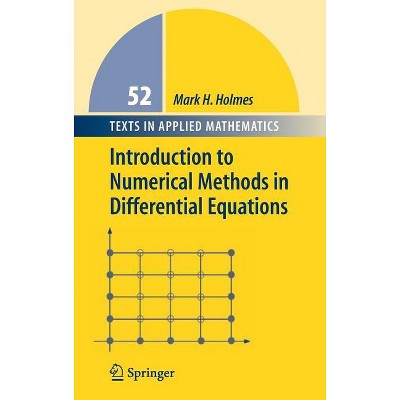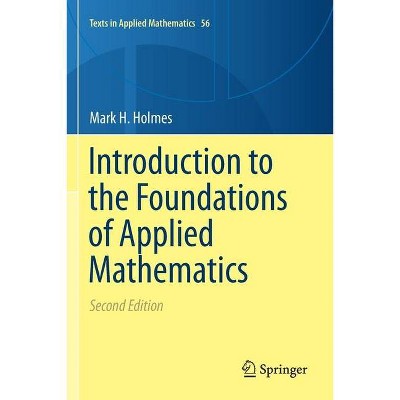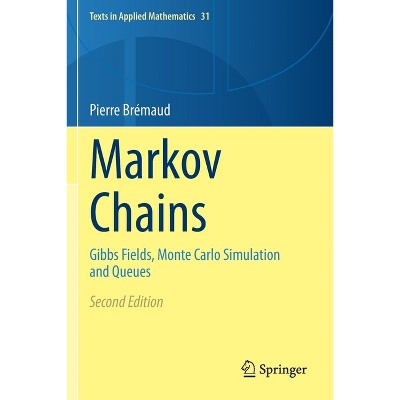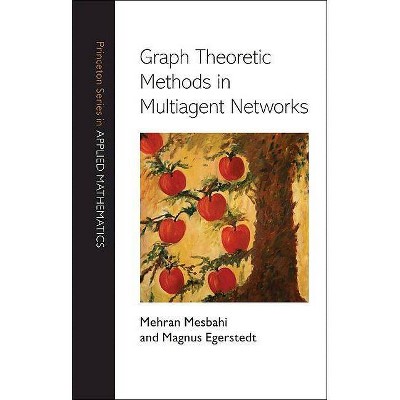Nodal Discontinuous Galerkin Methods - (Texts in Applied Mathematics) by Jan S Hesthaven & Tim Warburton (Hardcover)

About this item
Highlights
- The text offers an introduction to the key ideas, basic analysis, and efficient implementation of discontinuous Galerkin finite element methods (DG-FEM) for the solution of partial differential equations.
- Author(s): Jan S Hesthaven & Tim Warburton
- 502 Pages
- Mathematics, Number Systems
- Series Name: Texts in Applied Mathematics
Description
About the Book
This book offers an introduction to the key ideas, basic analysis, and efficient implementation of discontinuous Galerkin finite element methods (DG-FEM) for the solution of partial differential equations.
Book Synopsis
The text offers an introduction to the key ideas, basic analysis, and efficient implementation of discontinuous Galerkin finite element methods (DG-FEM) for the solution of partial differential equations. This is the first text on DG-FEM, suitable both as a textbook and for self study. All key theoretical results are either derived or discussed, including an overview of relevant results from approximation theory, convergence theory for numerical PDE's, orthogonal polynomials etc. Through embedded Matlab codes, the algorithms are discussed and implemented for a number of classic systems of PDE's. Attention is paid to both basic analysis and algorithmic issues. The three appendices contain an overview of orthogonal polynomials and associated library routines used throughout, a brief introduction to grid generation, and an overview of the associated software (where to get it, list of variables etc). A variety of exercises are included at the end of most chapters.
From the Back Cover
This book discusses a family of computational methods, known as discontinuous Galerkin methods, for solving partial differential equations. While these methods have been known since the early 1970s, they have experienced an almost explosive growth interest during the last ten to fifteen years, leading both to substantial theoretical developments and the application of these methods to a broad range of problems.
These methods are different in nature from standard methods such as finite element or finite difference methods, often presenting a challenge in the transition from theoretical developments to actual implementations and applications.
This book is aimed at graduate level classes in applied and computational mathematics. The combination of an in depth discussion of the fundamental properties of the discontinuous Galerkin computational methods with the availability of extensive software allows students to gain first hand experience from the beginning without eliminating theoretical insight.
Jan S. Hesthaven is a professor of Applied Mathematics at Brown University.
Tim Warburton is an assistant professor of Applied and Computational Mathematics at Rice University.
Review Quotes
From the reviews:
"This book provides comprehensive coverage of the major aspects of the DG-FEM, from derivation, analysis and implementation of the method to simulation of application problems. It is a highly valuable volume in the literature on the DG-FEM. It is also suitable as a textbook for a graduate-level course for students in computational and applied mathematics, physics and engineering."
-Mathematical Reviews
"The book under review presents basic ideas, theoretical analysis, MATLAB implementation and applications of the DG-FEM. ... The representative references quoted are useful for any reader interested in applying the method in a particular area. ... This book provides comprehensive coverage of the major aspects of the DG-FEM ... . It is a highly valuable volume in the literature on the DG-FEM. It is also suitable as a textbook for a graduate-level course for students in computational and applied mathematics, physics, and engineering." (Weimin Han, Mathematical Reviews, Issue 2008 k)
"This book is intended to offer a comprehensive introduction to, and an efficient implementation of discontinuous Galerkin finite element methods ... . Each chapter of the book is largely self-contained and is complemented by adequate exercises. ... The style of writing is clear and concise ... . is an exceptionally complete and accessible reference for graduate students, researchers, and professionals in applied mathematics, physics, and engineering. It may be used in graduate-level courses, as a self-study resource, or as a research reference." (Marius Ghergu, Zentralblatt MATH, Vol. 1134 (12), 2008)
Shipping details
Return details
Trending Poetry











